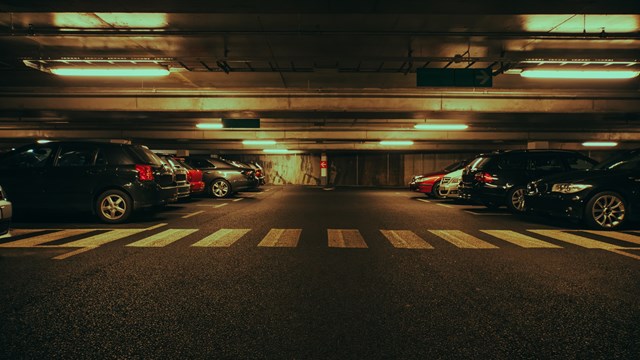The side of your residential building is a windowless plane of painted brick that stands ten stories higher than the adjacent co-op, clearly visible from the well-trafficked Queensboro Bridge. The side of the building has deteriorated a bit in the last few years and will need repairing-at considerable expense-sometime within the next year. There are already grumblings among the tenants, many of whom would rather not pay for such labor now, with a recession looming. The situation is setting up to be a major headache for you, the board president.
Enter Advil(tm). The company's outdoor advertising agency submits a proposal to your board to not only pay for the repair of the side of the building, but to bring in thousands of dollars a month in additional revenue. All you have to do is let them construct-on that huge side of the building with the unobstructed view of the Queensboro Bridge-an enormous print ad for Advil(tm). The proposal is submitted to the rest of the owners, who now have to decide between paying a substantial assessment for the repairs to your building exterior, or turning your beloved residence into an advertisement.
Is It Even Legal?
Before you even consider erecting a massive sign on your building, you need to do some research to find out a few important things. Your board's first legal hurdle is the zoning of your neighborhood. Residential districts prohibit such signs, says Elliott Meisel, a partner with Manhattan law firm Brill & Meisel. Other areas zoned for commercial and manufacturing usually allow signs.
If you live in a historically significant building such as a landmark, you have still more to consider. Most of the time, according to Meisel, such buildings are not allowed to construct signs at all. An exception is in SoHo, a landmarked district, where commercial signs are consistent with a district that historically permitted such advertisements. "If there wasn't previously a sign on the wall in a landmarked area," Meisel says, "it is highly unlikely they would permit one now." Permits for signs in landmarked buildings or areas have to get approval from the New York City Landmarks Preservation.
After you've determined that it's legal to hang a sign on your building, you must obtain a permit from the Building's Department of the City of New York, says Victor Famulari, president of Smith-Palmer & Famulari, Ltd., a prominent Manhattan signage company. "It depends on the size of the sign and the type of illumination."
Assume your un-landmarked building has good visibility from a busy highway and is appropriately zoned for a large exterior ad. Your board files for a permit with the City, and your application is approved. You're only partway there, however-the next step is figuring out the finances.
The Finance Factor
Under the oft-mentioned "80/20" requirement, co-ops may not derive more than 20 percent of their total revenue from sources other than the monthly fees paid by the shareholders for their apartments. Peculiar to co-ops, this requirement "enables individual shareholders to take the standard homeowners' deduction on their income tax returns," Meisel explains. "High traffic, large space, good visibility areas can be a substantial source of income for buildings."
If a building's revenue from signs will exceed 20 percent of the total, a separate corporate entity is often created-usually a limited-liability company (LLC) consisting of the same shareholders that own the building-to license the wall space from the co-op for less than the 20 percent amount. The often-considerable excess funds are then allocated among the owners of the new company. In effect, the LLC is a middleman, a liaison between the advertiser and the co-op. Says Meisel, "The new entity should assume as much of the obligations of the sign as possible, [like] painting, insurance, [and] waterproofing." The cost of these obligations can then be claimed as business deductions, minimizing income taxes for the shareholders.
But what if your building is a condominium, which is unaffected by 80/20 restrictions? In that case, the decision to lease your building's exterior is up to you and your fellow board members.
High-Level Negotiations
Once your board has decided to green-light a signage proposal, it's time to confer with the rest of your building's residents. According to Meisel, under the "Levin-Dusky rule,"-which allows boards substantial latitude to manage and operate their buildings without second-guessing from shareholders, except in cases of conflict of interest and negligence-you can now move forward with the plan ... unless, as a courtesy, you put it to a vote. Suppose a handful of people reject the plan, not wanting the building to be aesthetically spoiled by such a sign-what then? Of course, it's important to consider the wishes and preferences of all your residents, but if the majority would rather have the additional income generated by the advertising and spare future assessments, their position will reinforce your boards decision. If the board decides it's in the best interests of the building to do it, it gets done, even if some shareholders disapprove.
Nuts and Bolts...and Scrims
Even if residents overwhelmingly favor capitalizing on your building's exterior space, what happens after you've said "yes"? Sometimes sign companies will lease space from the building for a period of years and put up the ad that pays the most.. After all the approvals and authorizations are in order, the advertiser hires a company like Smith-Palmer & Famulari to design their sign.
"We do the graphics on the computer," says Famulari. "We see how it looks next to the building, then we send it to a signage [manufacturing] company" that physically fabricates the sign. According to Famulari, most signs are made of glass and lightweight metals like stainless steel or aluminum.
Sign material is important. Structural risks to the building depend on the weight of the sign and how it is attached to the wall. Usually, "female" bolts drilled into the side of the building are attached to "male" bolts on the sign itself. "It's easy, actually," says Famulari. Procedurally, constructing a sign is not much different from installing a new elevator or fixing a leaky roof. In the case of a building with an exterior in need of help, however, the wall intended for the sign must first be repaired before the sign is attached. Quite often, the value of a piece of advertising in a high-traffic, high-visibility area is worth the cost of repairing the building surface to the advertiser. Many advertisers are more than happy to pay for exterior improvements on buildings they feel are ideally positioned to shill their product.
Other issues that might arise include:
Legally, windows and sight lines cannot be obstructed. For example, even if the ad is a scrim-a huge sheet of semi-transparent, mesh-like material that lets light through from behind-it cannot legally cover a window.
Signs that project outwards may cross property lines. If this is the case, you need the consent of the adjacent property owner whose space is being compromised.
The sign company will usually need roof access to maintain the sign. This brings up liability issues-what if the worker falls from your roof while attaching the sign? Such concerns should be addressed in writing before construction begins.
Aesthetics may also be an issue-not for artistic reasons, but for legal ones. Is the ad tasteful? Will it disturb drivers? More importantly, will it indemnify you if a trademark is violated, or if someone is defamed?
According to Meisel, all these legal issues should be worked out with your building's legal counsel before construction.
And what about afterward, then the sign's up and people are starting to refer to your residence as "The AdvilTM Building?" There may still be some grousing about the sign-that it's too big, or too garish, or too cravenly commercial-but the benefits are undeniable: You generated revenue for your building and got someone to underwrite needed repairs without increasing maintenance charges or having an assessment. That alone may make it all worth the new nickname.
Mr. Olear is a freelance writer and novelist living in Astoria, Queens.







Leave a Comment